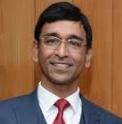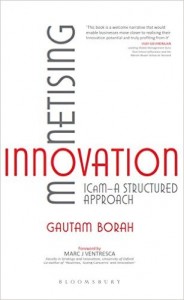Change Means Future Fit Innovation
In today’s chaotic and un-predictable business environment every organization in the private sector, government and non-profit is constantly being challenged to evolve. If they don’t, they perish. It’s like Darwin’s theory of evolution for organizations. The good news is that we have quite a few who have successfully evolved and become future fit.
We recently interviewed Gautam Borah to understand his perspective about innovation. Gautam is the author of the book “Monetising Innovation” published by Bloomsbury. He is an alumnus of Oxford and currently part of Customer Operation Team of an MNC. His website is www.gautamborah.com
Neil: What attracted you to Innovation?

Gautam: Innovation is about rediscovering, both at individual as well as organizational level to stay relevant. It’s about survival. From the Roman Empire to the Pan Am World Airways, there are umpteen examples of fall of the high and mighty all throughout the human history, from the biggest of the empires to the mightiest of the corporations. While much has been written on the reasons, delving deeper leads to the only one reason – their rate of innovation was not synchronous with what was exacted by the changing environment. At this point, always comes the eternal question – how can an organization remain Innovative?
In a broader sense, my interest in Innovation also stems from the same curiosity.
Neil: What does a company need to do to foster innovation and creativity?
Gautam: Let me draw a parallel here. How does an army win a battle? Take the example of the invincible army of Genghis Khan. The might of the Mongol army under Genghis Khan was due to the organization and execution. The organization part is important in this context which comprises an agile structure, discipline, speed, knowing the environment (opponent) well etc. It is the system that is imbibed over years which can create an army which can win war after war.
Similar is the case of Innovation. It entails a system that drives Innovation. This requires a conscious effort.
Neil: What is your big idea on Innovation?
Gautam: I have addressed the philosophy of this in the previous answer. An organization, to ensure sustained innovation needs to create a system that inspires Innovation. The idea is to work around the Innovation Drivers that ensures a continuous stream of Innovation rather than intermittent uncontrolled spurts.
Neil: What is your model of innovation and how is it different from other models?
Gautam: Let me start from where I ended the answer to the last question. The philosophy is to create a system that fosters sustainable Innovation. When anyone mentions an inspiring system like this, one needs to know the drivers which are constituents of the system.
Here, we are calling them as Innovation Drivers.
My book Monetising Innovation (Bloomsbury Publication) is exactly about this. The ICaM (Innovation Capability Model) model presented in the book lists 18 Innovation Drivers that an organization needs to nurture to remain Innovative.
I would put three points that differentiate this model – (a) It is pragmatic rather than theoretical – Few hundred practitioners and CXOs were interviewed / consulted backed up by primary and secondary research and testing to build a model that can be applied in a practice environment, (b) Measurable Model – Using this model, an organization can measure where it stands across the Innovation Drivers and align it’s resources accordingly to drive its Innovation initiatives, (c) Result oriented framework – The framework is built around the Innovation premise “Innovation = Creativity + Commercialization + Business Result”. Many a failure of Innovation initiatives in any organization is the lack of effective measurement. The framework takes care of that with clear focus on business results using defined metrics.
Neil: Can a company teach its people to be innovative?
Gautam: My belief is “Yes” – A company can teach it’s people to be innovative. It’s all about recruiting the right skill set, honing it to match entailed by changing needs and creating a culture that inspirit Innovation. “People” part in ICaM discusses this detail in my book Monetising Innovation.
Neil: What is one big change that you want to see in a company to become innovative?
Gautam: If I must, I shall urge a company to shift from sporadic Innovation (which is uncontrolled) to systemised or structured Innovation (where you know what is driving or retarding it). The second important point is to differentiate between creativity (which is just idea generation) and Innovation (which is Creativity + Commercialization + Business Result).
Follow Gautam on twitter @gautamkborah. His website is www.gautamborah.com
To know more about the book, click on the image below.

